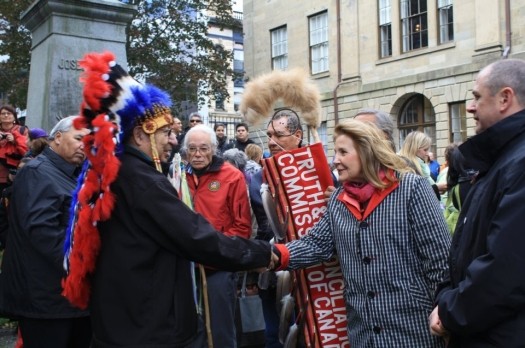ICTJ has just released a new publication, “Drafting a Truth Commission Mandate: A Practical Tool,” which is intended to inform victims’ groups, civil society, and governments about the contents of a legal mandate of a truth commission.
In pursuing the truth about mass crimes, a mandate provides a truth commission with more than just a legal authorization to act. It sets out a vision of what society hopes to achieve through the truth-seeking process and provides direction to commissioners and others in their operations.
It also sets standards for tangible outcomes, such as the final report, where the findings of human rights violations—from enforced disappearances to massacres to other crimes defined by the mandate—will be presented.
As the publication explains, “Well-crafted mandates enable a commission to undertake its tasks with effectiveness: they set the stage for productive cooperation among institutions and allow civil society to fully understand the nature and potential of the truth-seeking exercise.”
Since the Argentinian National Commission on the Disappearance of Persons in 1983, more than forty truth commissions have been created, each with a unique mandate.
Most commissions are born of an executive decree (like Argentina’s) or an act of parliament (like South Africa’s). But they can also result from a judicial decision, as in Canada’s Truth and Reconciliation Commission, or from a peace agreement, like Guatemala’s Commission on Historical Clarification. By any route, what is paramount is to ensure an optimal balance of vision, clarity of purpose, and adequate powers to the task at hand.
Because drafting a mandate is a complicated task involving many different groups over many months, ICTJ’s publication is written as a straightforward, practical tool. It offers a “checklist” of necessary elements, common to several mandates of past truth commissions, that drafters can consider in ensuring that the architecture of a future commission is precise.
Taking a comparative approach, the tool provides numerous examples of how laws and decrees have set their truth-seeking agenda and tackled issues in different countries, including Argentina, Brazil, Ghana, Guatemala, Liberia, Peru, South Africa, and East Timor. It also gives some possible explanations for these choices.
The tool does not provide specific prescriptions of what definitions or structures should be included as part of a truth commission, however. “Each national context is different, and each commission responds to specific needs and realities,” explains Eduardo González, director of ICTJ’s Truth and Memory program. “Decisions about what to include in a mandate are complex and belong to national stakeholders engaged in genuine dialogue and consultation. Cookie-cutter advice that might try to make all truth commissions identical is not helpful.”
What needs to be similar in all commissions is an allegiance to the rights of victims of the most serious human rights violations, for whom the commission is to be established. In the end, the truth commission’s purpose is to satisfy their right to the truth and, eventually, to help facilitate their access to justice through other transitional justice mechanisms, such as reparative justice and criminal prosecutions.
“Victims should be involved as full collaborators from the outset,” says González. “Their rights rest at the heart of the truth-seeking process, so the mandate should reflect their views, needs, and input.”
The current tool is the third in a series of publications recently issued by ICTJ in the area of providing technical advice to truth commissions.
Previously, the ICTJ published “Truth Seeking: Elements of Creating an Effective Truth Commission,” a document with an accompanying multimedia project, which covers the step-by-step process of establishing and operating a truth commission; and "Strengthening Indigenous Rights Through Truth Commissions: A Practitioner’s Resource,” a study of how indigenous peoples can use truth commissions to advance their rights.
Learn more about ICTJ's Truth and Memory program here
Photo: Public event with participants of the Truth and Reconciliation Commission of Canada, October, 2011. Courtesy of the TRC
